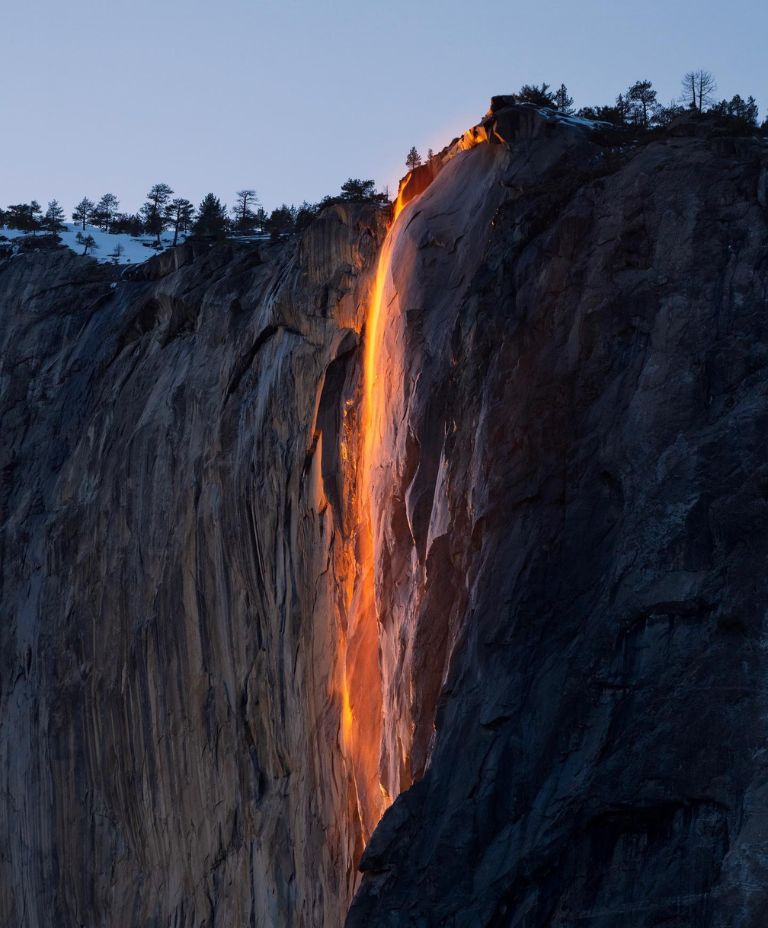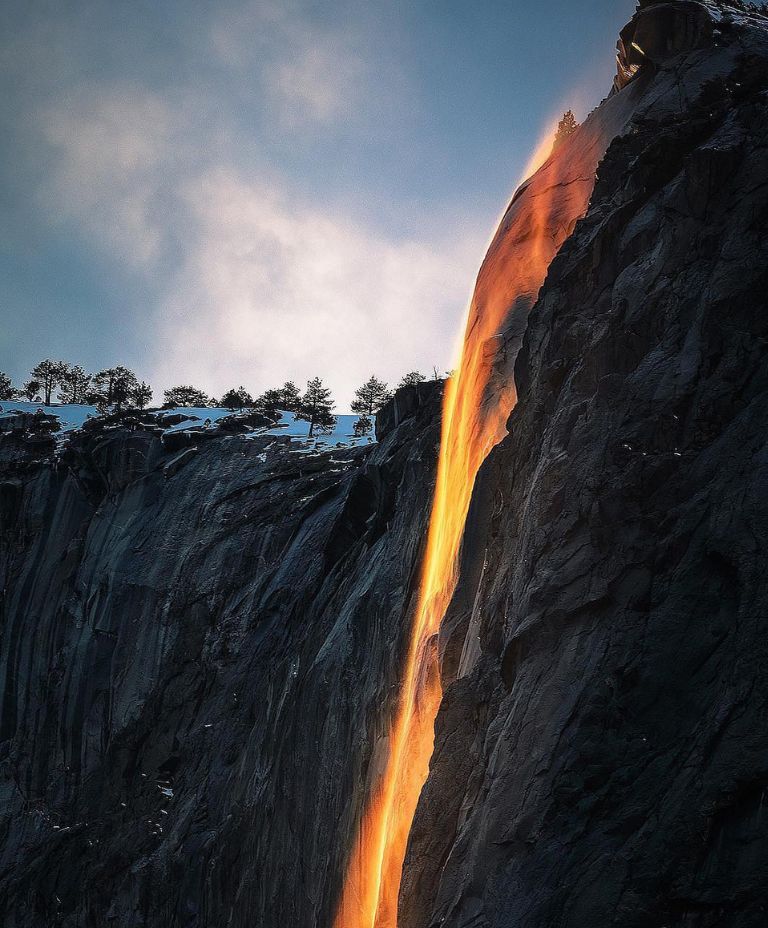There’s a natural phenomenon that happens during a short period once per year in Yosemite National Park, and witnessing it in the flesh is truly a once-in-a-lifetime experience.

The Yosemite Firefall
The phenomenon known as “Firefall” at Yosemite National Park is a stunning natural display that captivates observers with its seemingly fiery cascade off the edge of El Capitan, one of the park’s most iconic granite cliffs.
Despite its name, the Firefall is not actual fire but rather a natural trick of the light that illuminates Horsetail Fall in such a way that the waterfall glows as if it were ablaze.
This breathtaking visual effect occurs for a short period in February each year and is dependent on specific environmental conditions, making it a highly anticipated and often elusive spectacle.

When It Happens
The Firefall phenomenon typically occurs during the last two weeks of February.
The timing is crucial, as it coincides with the setting sun’s position in the western sky, which is necessary for the light to strike the waterfall at just the right angle.
The exact dates and duration of the Firefall can vary slightly each year due to the sun’s position and the changing landscape of Yosemite Valley.

Why It Happens
The magic of the Firefall is a result of a perfect alignment of natural factors.
First and foremost, Horsetail Fall, which flows over the eastern edge of El Capitan, must be flowing.
This requires sufficient snowpack in the higher elevations of the park and warm enough temperatures to melt the snow and feed the waterfall.
Secondly, the western sky must be clear at sunset to allow the sun’s rays to illuminate the waterfall.
When these conditions are met, the setting sun’s light reflects off the waterfall in such a way that the water appears to be a cascading flow of fire against the darkening cliff face.
The Historical Context
Interestingly, the name “Firefall” has historical significance in Yosemite that predates the natural phenomenon.
It originally referred to a summer event where burning embers were pushed from the top of Glacier Point down to the valley 3,000 feet below, creating a man-made waterfall of fire.
This event was a popular tourist attraction from 1872 until 1968, when it was discontinued due to the overwhelming impact on the park and its natural resources.
Observing the Firefall
Witnessing the Firefall requires not only timing but also a bit of luck, as the necessary conditions don’t always align.
Spectators typically gather in specific viewing areas in Yosemite Valley, such as the El Capitan Picnic Area, where they can see the waterfall bathed in the evening’s golden light.
In recent years, the popularity of the Firefall has grown significantly, leading the park to implement special regulations during the event period, including restricting vehicular access to the area and requiring visitors to use shuttle buses or walk to the viewing sites.
Conservation Considerations
The increased attention and foot traffic to the Firefall event have raised concerns about the impact on Yosemite’s delicate ecosystem.
Park authorities have taken steps to mitigate these impacts, such as establishing viewing areas to concentrate foot traffic and protect vegetation, enforcing parking regulations to reduce congestion, and educating visitors on the importance of leaving no trace.
Conclusion
The Firefall at Yosemite National Park is a spectacular natural event that illustrates the beauty and intricacy of the natural world.
It serves as a reminder of the delicate balance that exists within our environment and the importance of preserving such wonders for future generations.
For those fortunate enough to witness it, the Firefall is an unforgettable experience that embodies the awe-inspiring power of nature.
Whether seen in person or through photographs, the Firefall remains one of Yosemite’s most extraordinary sights, a fleeting moment where fire and water, earth and sky, converge in a display of nature’s grandeur.
